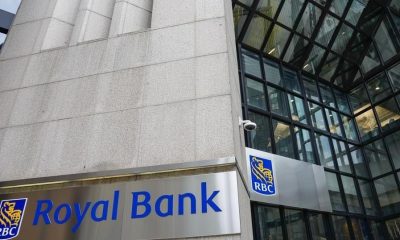Economy
Why are Americans so gloomy about their great economy? – The Economist
“The vibes are off” is a phrase that does not usually appear in rigorous economic analysis but has cropped up again and again in serious discussions about America over the past year. From an array of hard data, there is reason to think that people ought to be quite satisfied about the state of the economy: inflation has slowed sharply, petrol prices are down, jobs are plentiful, incomes are rising and the stockmarket is strong. But survey after survey suggests that Americans are in fact quite unhappy. They think that the economy is in bad shape and that President Joe Biden is mismanaging it. What gives?
Start with the evidence of gloom. The figure watched most closely by economists for an idea of what people are feeling is a consumer-sentiment index from the University of Michigan. For the past two years it has bounced around at levels last seen during the global financial crisis of 2007-09. Even with an improvement in December, it is still 30% below its recent peak on the eve of the covid-19 crisis in early 2020.

Many other surveys are equally downcast. Every week since 2009 The Economist/YouGov poll has asked some 1,500 Americans to assess the economy: nearly half now think it is getting worse, up from about one-third in the decade before covid. Questions focused on Mr Biden’s record yield even less enthusiasm: two-thirds of respondents to a Gallup poll in November disapproved of his handling of the economy. And all this despite America outgrowing its large, developed peers over the past few years.
The fact that so many Americans are so dejected about such a strong economy has spawned a cottage industry of theories. A first batch argues that they have every right to feel glum: some of the figures which matter most to their pocketbooks are just not that rosy. Inflation has eroded their wages. Controlling for consumer prices (one common measure of inflation), average earnings for private-sector workers are basically stuck at the same level as in February 2020, right before covid struck.
More recent baselines are even less flattering. Although few Americans would want to go back to a world of covid shutdowns, many did receive big benefits from the government’s spending spree at the time. After-tax personal income is about 15% lower now than in March 2021, when it was propped up by the massive stimulus package passed by Democrats soon after Mr Biden took office. Another unflattering comparison with the recent past: the aggressive interest-rate rises needed to tame inflation have made loans for houses and cars much more expensive. Housing affordability hit its lowest in decades last year, serving as an easy target for critics of Mr Biden. The Republican National Committee says Bidenomics is “pricing out millions of people from the American Dream”.
However, as the Biden administration is only too keen to point out, there are many things to like about the current economy. The supposed stagnation in private-sector wages is in fact a statistical illusion caused by upward bias in the consumer-price index. Use a better alternative—the personal-consumption expenditures index targeted by the Federal Reserve—and real wages are roughly on their pre-pandemic trend. At 3.7% the unemployment rate is just a touch above a five-decade low. Wage growth has been especially strong for low-income Americans. The S&P 500, an index of America’s leading stocks, has been flirting with record highs.
To judge from the range of indicators—good and bad—Americans do appear to be unduly pessimistic. Ryan Cummings and Neale Mahoney, two economists who previously served in the Biden White House, created a simple model to predict the level of the consumer-sentiment index, drawing on inflation, unemployment and consumption data as well as stockmarket performance. Their conclusion was that the index has been about 20% lower than where the data suggest it ought to be. Other models have found a similar discrepancy.
This suggests a second category of explanation: that opinion polling and sentiment surveys may have a negative bias. Profound partisan hostility is undoubtedly one factor. In their study Messrs Cummings and Mahoney calculated that Republican antipathy towards a Democrat-controlled White House may account for about 30% of the sentiment gap today.
Another element may be the tone of news coverage. Ben Harris and Aaron Sojourner of the Brookings Institution, a think-tank, studied the relationship between economic data and an index of economic news sentiment. Since 2021 the news-sentiment index has, like the consumer-sentiment index, been notably worse than what would be expected from the data. And that may be only scratching the surface. The news-sentiment index, created by the Federal Reserve’s branch in San Francisco, is based on economic articles in major American newspapers. Throw in the vitriol that tends to go viral on social-media platforms, and the negative bias might be even more pronounced.
A final explanation is that there may simply be a long lag between the post-pandemic recovery and feelings about the economy. It has been a topsy-turvy period. The extreme uncertainty of the covid years—job losses, school closures, bankruptcies and illness—took a toll on people. Many are still upset by the bruising battle with inflation. Although inflation has moderated, prices are nearly 20% higher than when Mr Biden took office. The sticker-shock takes some getting used to. Messrs Cummings and Mahoney estimate that a 10% inflation surge reduces consumer sentiment by 35 index points in the year it occurs, 16 points in the next year and eight points the year after that.
If a similar timeline is now in play, Americans have probably gone about halfway towards accepting their new higher-priced reality. It also helps that real-income growth has accelerated over the past year, letting them recover some of their lost purchasing power. The consumer-sentiment index has been volatile, but it did clearly bottom out in mid-2022—right around the peak in inflation—and it did also post a solid rise in December, even if it remains low by historical standards.
“Our theory of the case is that if we can continue to maintain a tight labour market while easing inflation and delivering real wage gains, that recipe should show up in improved sentiment. And we think we’re starting to see that,” says Jared Bernstein, chair of the White House Council of Economic Advisers. The vibes, in other words, may be picking up. ■
Economy
Libyan Oil Shutdown Begins as UN Warns Feud Risks Economic Chaos – BNN Bloomberg
[unable to retrieve full-text content]
Libyan Oil Shutdown Begins as UN Warns Feud Risks Economic Chaos BNN Bloomberg

Source link
Economy
Norway’s Economy Ekes Out a Gain for Third Straight Quarter
(Bloomberg) — The Norwegian economy recorded a third consecutive quarter of expansion, as a recovery in purchasing power bolstered car purchases and a weak krone underpinned exports.
Mainland gross domestic product, which excludes offshore energy industry and shipping, grew by 0.1% in the second quarter from the previous three months, according to a release from Statistics Norway published Thursday. First-quarter growth was revised lower to 0.1%.
Thursday’s reading was just below the 0.2% growth estimated by both the central bank and economists in a Bloomberg survey.
The outcome shows the energy-rich Nordic nation is dented more than previously assumed by the fallout from interest rates at a 15-year high, even as the slowing inflation and wage growth above 5% fuel consumption.
The weaker-than-forecast figures, together with revision of earlier data, may still increase the odds of Norges Bank reducing borrowing costs before next year. The Norwegian policymakers have kept delaying monetary easing as one of the most aggressively hawkish in the rich world, forecasting no change “for some time ahead” at their meeting last week.
“Negative revisions clearly leave a picture of a weaker mainland economy than Norges Bank projected back in June,” said Kristoffer Kjaer Lomholt, head of FX and corporate research at Danske Bank A/S. “All in all, a report that should keep the door open for a December cut.”
Household consumption grew by 1.6% on quarter due to a “strong upswing” in car purchases, the statistics office said, while noting the figures for the sector can fluctuate “widely.” Trade and power supply also helped boost mainland growth, it said.
The krone is hovering near four-year lows, helping demand for Norwegian exports, as well as its tourism sector. It was little changed following the report, trading 0.1% lower at 11.7233 versus the euro at 8:50 a.m. in Oslo.
Total exports grew 5.6% on quarter, the fastest increase in almost two years, as oil and gas shipments were less affected by maintenance works that are usual for the season.
The country’s largest lender, DNB Bank ASA, on Wednesday kept its forecast for full-year growth of 0.8% in 2024 and projected next year’s growth at 1.6%, largely due to higher purchasing power of consumers. That compares with Norges Bank’s estimates of expansion of 0.8% and 1.3%, respectively, published in June.
Analysts at DNB and Svenska Handelsbanken AB said the deviation from the central bank’s estimates was too small to clearly affect policymakers’ rate outlook.
–With assistance from Joel Rinneby.
(Updates with analyst comment, market reaction from fourth paragraph.)
©2024 Bloomberg L.P.
Economy
Gaza war extends toll on Israel’s economy
Last week, Fitch Ratings downgraded Israel’s credit score from A+ to A. Fitch cited the continued war in Gaza and heightened geopolitical risks as key drivers. The agency also kept Israel’s outlook as “negative”, meaning a further downgrade is possible.
After Hamas’s deadly attack on October 7, Israel’s stock market and currency nosedived. Both have since bounced back. But concerns about the country’s economy persist. Earlier this year, Moody’s and S&P also cut their credit ratings for Israel.
So far, Israel’s war on Gaza has killed more than 40,000 Palestinians and decimated the economy in the besieged Palestinian enclave.
There are signs of a blowback in Israel, too, where consumption, trade and investment have all been curtailed.
Separately, Fitch warned that heightened tensions between Israel and Iran could incur “significant additional military spending” for Israel.
The Bank of Israel has estimated that war-related costs for 2023-2025 could amount to $55.6bn. These funds will likely be secured through a combination of higher borrowing and budget cuts.
The upshot is that combat operations are putting a strain on the economy. On Sunday, Israel’s Central Bureau of Statistics estimated that output grew by 2.5 percent (at an annual rate) in the first half of 2024, down from 4.5 percent in the same period last year.
Slowing growth
Before the outbreak of the war, Israel’s economy was forecast to grow by 3.5 percent last year. In the end, output expanded by just 2 percent. An even sharper drop was avoided thanks to the country’s all-important tech sector, which has been largely unaffected by fighting.
Other parts of the economy have taken a significant hit. In the final quarter of last year and in the weeks after the war began, Israel’s gross domestic product (GDP) shrank by 20.7 percent (in annual terms). The slump was driven by a 27 percent drop in private consumption, a drop in exports and a slash in investment by businesses. Household expenditure snapped back at the start of the year, but has since cooled.
Israel also imposed strict controls on the movement of Palestinian workers, forgoing up to 160,000 workers. To tackle those shortages, Israel has been running recruitment drives in India and Sri Lanka with mixed results. But labour markets remain undersupplied, particularly in the construction and agriculture sectors.
According to the business survey company CofaceBDI, roughly 60,000 Israeli companies will close this year due to manpower shortages, logistics disruptions and subdued business sentiment. Investment plans have, in turn, been delayed.
At the same time, tourist arrivals continue to fall short of pre-October levels.
Meanwhile, the war has triggered a steep rise in government spending. According to Elliot Garside, a Middle East analyst at Oxford Economics, there was a 93 percent increase in military expenditure in the last three months of 2023, compared to the same period in 2022.
“In 2024, monthly data suggests military expenditure will be around double the previous year,” Garside said. Much of that increase will be used on reservist wages, artillery, and interceptors for Israel’s Iron Dome defence system.
Garside told Al Jazeera these expenditures “have mostly been financed by issuance of domestic debt”.
Israel has also received some $14.5bn supplemental funding from the United States this year, on top of the $3bn in annual aid that the US provides to the country.
Garside noted, “We are yet to see any major cutbacks to other parts of the budget [like healthcare and education], although it is likely that cuts will be made in the aftermath of the conflict.”
Absent a full-scale regional war, Oxford Economics anticipates that Israel’s economy will slow to 1.5 percent growth this year. Subdued growth and elevated deficits will put further pressure on Israel’s debt profile, which will likely raise borrowing costs and soften investor confidence.
Bruised public finances
Fitch expects Israel to permanently increase military spending by 1.5 percent of GDP compared to prewar levels, with unavoidable consequences for the public deficit. Last week’s rating report noted that “debt [will] remain above 70 percent of GDP in the medium-term”.
What’s more, the rating agency warned that “the conflict in Gaza could last well into 2025 and there are risks of it broadening to other fronts”.
Regional conflict
On Monday, US Secretary of State Antony Blinken said that Netanyahu had accepted a “bridging proposal” designed to reach a ceasefire between Israel and Hamas and diffuse growing tensions with Iran.
The following day, eight Palestinians were killed in an Israeli attack on a crowded market in Deir el-Balah, in central Gaza.
Hamas has yet to agree to the bridging proposal, calling it an attempt by the US to buy time “for Israel to continue its genocide”. Instead, the Palestinian group has urged a return to a previous proposal announced by US President Joe Biden, which has more guarantees that a ceasefire would bring about a permanent end to the war.
Netanyahu has insisted that the war will continue until Hamas is totally destroyed, even if a deal is agreed. Israeli officials, including Defence Minister Yoav Gallant, have rubbished the idea of a total victory against Hamas.
A decades-old shadow war between Israel and Iran surfaced in April, when Tehran launched hundreds of drones and missiles at Israel in response to the killing of two commanders from Iran’s Islamic Revolutionary Guard Corps (IRGC) in Damascus.
Along its Lebanese border, Israel has traded near-daily attacks with Hezbollah since last October. The armed group began firing on Israel as a show of solidarity with Hamas. Both organisations have close ties with Iran.
More recently, the assassinations of Hamas leader Ismail Haniyeh in Tehran and Hezbollah military commander Fuad Shukr in Beirut have sparked fears that the conflict in Gaza could metastasise into a regional conflict.
“The human toll [of a wider war] could be significant. There would also be huge economic costs,” says Omer Moav, an Israeli economics professor at the University of Warwick.
“For Israel, a long war would come with high costs and greater deficits,” he said.
In addition to undermining Israel’s debt profile, Moav said that prolonged fighting would incur “other costs”, like labour shortages and infrastructure damage, as well as the possibility of international sanctions against Israel.
“Israel is currently ignoring the fact that economics may lead to greater [societal] damage than war itself,” said Moav. “The government is not behaving responsibly. Does it want to avoid the costs of war, or does continued conflict serve political interests?”
-

 News20 hours ago
News20 hours agoB.C. caps rent increases next year at 3 per cent, matching inflation
-

 News21 hours ago
News21 hours agoTrudeau insists he still has what Canadians want, despite polling numbers
-

 News15 hours ago
News15 hours agoDefending champion Montreal Carabins top first U Sports football rankings of season
-

 News22 hours ago
News22 hours agoIt looked like Israel and Hezbollah had gone to war, but then they pulled back. Here’s what to know
-

 News21 hours ago
News21 hours agoPolice urge suspect in deaths of two Toronto women to surrender
-

 News23 hours ago
News23 hours agoCanada to hit China with tariffs on electric vehicles, aluminum, steel
-

 News20 hours ago
News20 hours agoRBC details case for firing former CFO, employee in court documents
-

 News13 hours ago
News13 hours agoCoco Gauff begins her US Open title defense with an easy win after a two-match losing streak






















